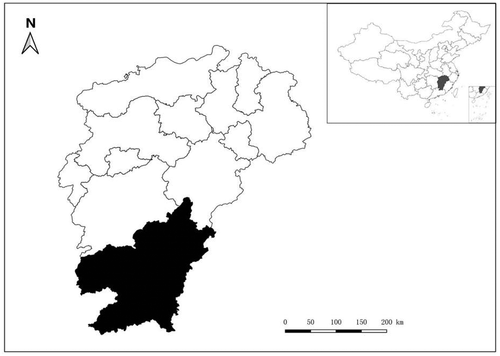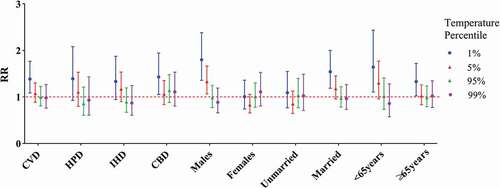Figures & data
Table 1. Summary statistics of meteorological data and air pollution (mean (SD)), mortality (mean (%)) from cause-specific cardiovascular diseases and individual characteristics, in Ganzhou during
Figure 2. Three-dimensional graph of the relative risks of cardiovascular mortality by daily mean temperature (°C) days and lag days, during 2015–2019. The relative risks for mortality of types of CVD and individual characteristics. The relative risks used eight of degree of freedom for time trend and daily mean temperature for temperature indicator. The reference temperature was the median temperature during the study period

Table 2. The cumulative cold effects on lag 0, 0–7, 0–14, 0–21 days from cause-specific cardiovascular disease and individual characteristics



